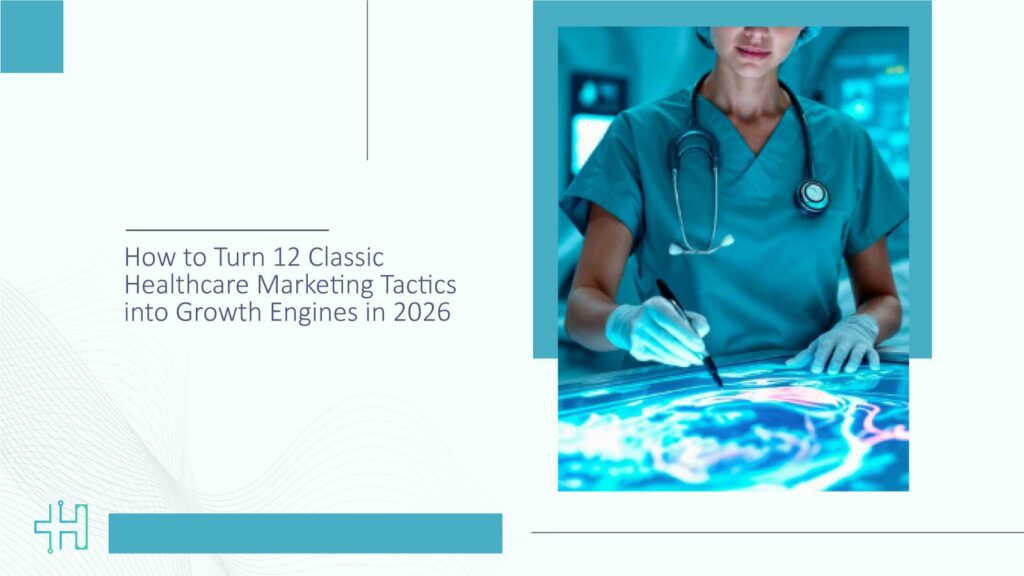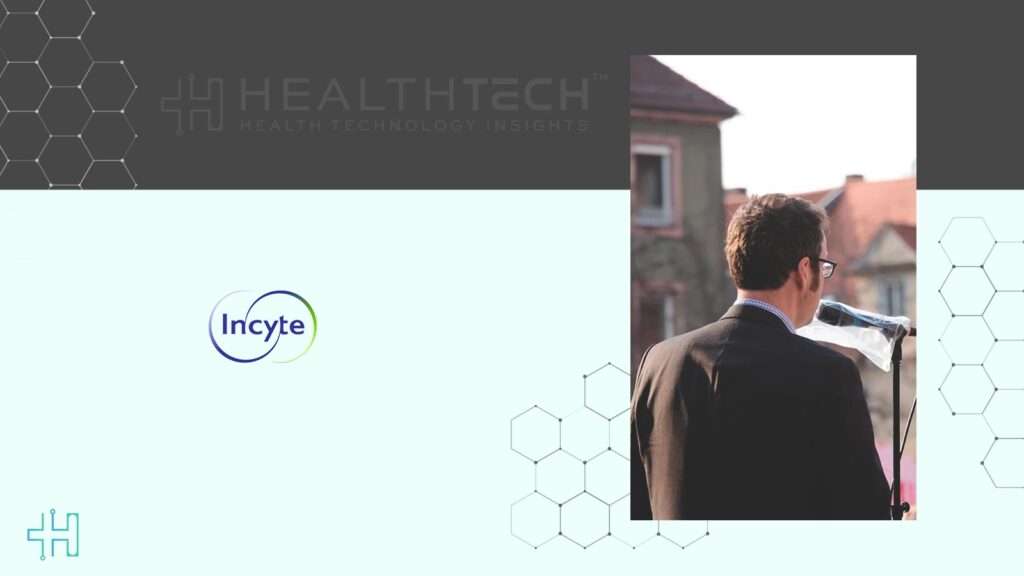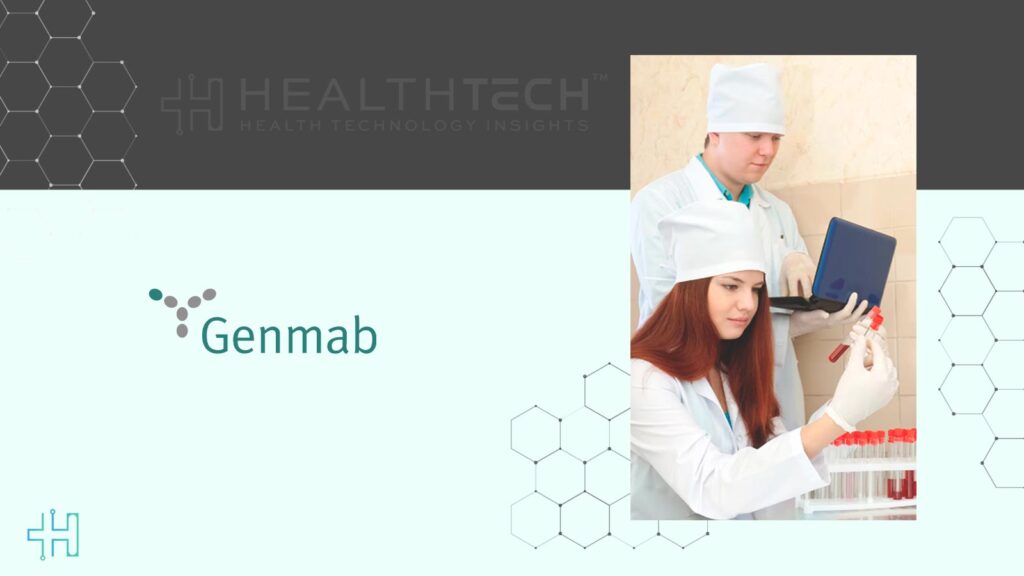Healthcare marketing hasn’t exactly been known for reinvention. For years, many hospitals, healthtech firms, and medical groups followed the same playbook: Send a newsletter. Run a billboard. Maybe post on social when there’s an awareness month. However, 2026 is fast, connected, and filled with patients who check reviews before they check symptoms, who expect convenience with care, and who want meaningful digital experiences.
So, what if we stopped trying to invent brand-new tactics and started reinventing the ones that already work? That’s exactly what we’re doing in this guide. Whether you’re a healthcare executive, a tech founder, or a marketing strategist trying to keep up with this always-on industry, consider this your deep dive into how 12 familiar strategies are being transformed into growth engines, not by chance, but by design.
Tactic 1: Email That Feels Like Care, Not Campaign
We all get those emails, the kind that land with a dull thud in your inbox. A headline you’ve seen before, a call to action you’ll never click, and content that might as well have been written in 2014.
Now, imagine getting an email from your care provider that feels helpful. A gentle reminder to schedule that long-postponed screening. A curated tip for managing energy levels during allergy season. A message that makes you feel like someone remembered, not just your name, but your needs.
That’s what healthcare marketing email looks like in 2026.
Smart health systems like Mount Sinai have moved past monthly newsletters. They’re using real-time triggers, predictive AI, and respectful personalization to send the right message at the right time. The result? A 21% jump in appointments and a meaningful rise in patient satisfaction.
Because when your inbox feels more like part of your care experience than a marketing list, you start to pay attention.
Tactic 2: Landing Pages That Don’t Just Speak
Let’s be real. The old model of healthcare landing pages was like walking into a waiting room with no one at the desk. Static, cold, and unhelpful.
Now imagine a page that recognizes where you came from, tailors its message in real time, and guides you step by step to exactly what you’re looking for. Maybe it’s a same-day appointment, a quick answer, or perhaps it’s just a reason to trust you.
That’s what leading systems are doing with dynamic landing pages in 2026.
One Medical nailed it last year. By customizing landing pages based on whether a user clicked from Instagram, email, or SMS, they made each page feel more like a conversation than a conversion. Trial bookings soared by 48%.
A landing page that adjusts to your intent feels less like a funnel and more like a front door.
Tactic 3: Reviews That Build Your Brand And Your Pipeline
Here’s something we all do, but rarely admit. We scroll reviews before we pick a doctor, book a service, or even consider a new app. It’s not skepticism, it’s just smart decision-making.
So why are so many healthcare organizations still treating reviews like a legal checkbox?
The best ones now treat them like mini patient stories, opportunities to showcase not just satisfaction, but connection. Real feedback, emotion, and proof that what you’re promising is happening on the ground.
Carbon Health embedded review prompts directly into their care workflows and analyzed the language using smart tools. Then they responded every time with warmth, speed, and purpose. The payoff? A 39% increase in patient acquisition through organic search.
Because in a world where patients trust strangers on the internet more than brand slogans, your reviews are your reputation, and your most affordable growth driver.
Tactic 4: SEO That Sounds Like a Human, Not a Help File
There’s a big difference between content that ranks and content that reassures.
Patients don’t want jargon. They want clarity. They’re not searching for “minimally invasive outpatient procedure solutions.” They’re typing: “Will it hurt?” “Can I drive the next day?” “Is this covered by insurance?”
That’s where modern healthcare SEO wins by anticipating those real questions and answering them in a way that sounds like a person who cares.
Mayo Clinic cracked this code with a simple shift. They restructured patient content to follow FAQ-style questions written in plain language. Results? Longer time on site. More trust. More search visibility.
In 2026, it’s not just about ranking higher. It’s about being the voice they believe when they’re making a big decision about their health.
Tactic 5: Social Media That Connects, Not Performs
Healthcare isn’t a trend. It’s a life decision. So why are some brands still chasing dances and hashtags?
The truth is that your patients aren’t looking for entertainment; they’re looking for evidence. They want to see real doctors doing real work. Real patients sharing honest stories. Real care, shown in human terms.
Cedars-Sinai gets it. Their Instagram presence doesn’t shout. It quietly tells stories: behind-the-scenes of care teams, quick myth-busting videos, heartfelt patient wins. It’s content that earns attention, not demands it.
That’s why they’ve seen a 44% jump in social-attributed patient referrals. Not because of virality. Because of values.
Social media in 2026? It’s not about likes. It’s about lasting impressions and reminding people, in small but consistent ways, that they’re in good hands.
Tactic 6: Webinars That Teach First, Sell Later
We’ve all been there, signing up for a “free” webinar that quickly turns into a glorified sales pitch. By minute fifteen, you’re eyeing the “Leave Meeting” button.
In 2026, the healthcare organizations getting it right are flipping the script. They’re making webinars feel more like trusted guidance and less like gated marketing.
That means featuring clinicians, real patient Q&A, and content built to inform, not impress.
When Boston Health Partners started hosting monthly “Ask a Doc” livestreams, their goal wasn’t conversions; it was connection. The results? Audience growth, more engaged follow-ups, and a 23% lift in care inquiries from first-time viewers.
People don’t want to be sold to. They want to be helped. Help them first, and they’ll come back, often with questions, and often as future patients.
Tactic 7: Content That Calms, Not Just Converts
There’s no shortage of content out there. But much of it feels like it’s written for algorithms, not actual people.
Today’s health consumers are often scared, searching in the middle of the night, looking for answers that don’t make them feel overwhelmed or worse off.
This is where empathetic content becomes your brand’s secret sauce.
Take Evergreen Women’s Health, for example. Their blog on “What To Expect In Your First Fertility Visit” reads like a reassuring friend wrote it. It balances clarity with kindness, and that’s why it sits on top of Google’s first page, with an average read time of over four minutes.
It’s not about cramming in keywords. It’s about being the voice of calm in a storm of uncertainty.
Tactic 8: Patient Journeys, Not Just Personas
Marketers love personas: “Busy Brenda, 34, lives in the suburbs, wants convenient care.” But in real life, Brenda’s not static. She’s moving through emotions, decisions, and very real health moments.
In 2026, healthcare marketing is getting smarter by focusing on real journeys, not cardboard cutouts.
That means mapping every digital and physical touchpoint, from first Google search to post-discharge follow-up and asking: Where are they emotionally? What do they need right now?
Banner Health built a digital journey map for joint replacement patients and spotted a major friction point: insurance questions two weeks before surgery. By proactively answering them via text and email, they cut no-show rates by 31%.
Personas are ideas. Journeys are real. Follow the journey if you want to create meaningful moments.
Tactic 9: Partnerships That Amplify Purpose
You don’t have to go it alone. The most forward-thinking healthcare marketers are strategic collaborators, partnering with fitness apps, mental health startups, and even local influencers to extend their reach.
In 2025, Sutter Health teamed up with Headspace to deliver guided meditations post-discharge. Not only did this improve patient satisfaction scores, but it also opened up new marketing narratives that felt authentic and patient-first.
Partnerships work best when there’s alignment in mission, not just audience. And when your partners share your values, your patients feel it.
Tactic 10: Tools That Empower, Not Just Impress
There’s no shortage of digital tools out there, but how many of them make life easier for the user?
In 2026, the best healthcare marketing tools are simple, intuitive, and empowering. Symptom checkers, pre-visit guides, and bill explainers aren’t trending or exciting, but they reduce anxiety and remove barriers.
Take Northwell Health’s virtual cost estimator. It gives patients a realistic idea of what they’ll owe before even stepping into a clinic. Usage has tripled since launch, and satisfaction has too.
The goal isn’t to wow people with tech. It’s to use tech that respects their time, intelligence, and emotions.
Tactic 11: When Data Starts Saying Something Real
Dashboards are usually full of charts that impress in meetings but don’t tell you a single useful thing about why patients came, why they didn’t convert, or why your beautifully written content didn’t get read past the second paragraph.
We don’t need more data. We need data that matters. In 2026, the best healthcare marketing teams aren’t chasing metrics; they’re listening to what their audience behavior is trying to say.
At the Cleveland Clinic, they dropped more than 60 “vanity” KPIs and started tracking just 12 signals tied to trust and action. Not just clicks or likes, but real moments, like how long someone stayed on a treatment page before clicking “schedule.” Or how many users drop off right after seeing a bill estimator?
That shift changed the way their marketing team operated. They didn’t just measure, they responded. Fast. Thoughtfully. With purpose.
A good dashboard should feel less like a report card and more like a pulse check.
Tactic 12: Your Brand Isn’t What You Say It Is
We throw around the word “brand” a lot. But let’s be honest, most people don’t remember your tagline. They remember how you made them feel the last time they needed you.
It’s the way the front desk greeted their aging parent. How simple your online booking form was when their toddler had a fever. Or whether they got a real reply or a canned message when they left a review.
In healthcare, your brand isn’t your color palette or campaign slogan. It’s the lived, felt, human truth that wraps around every patient experience.
Intermountain Health gets this. Their brand line, “People First, Always,” isn’t just a catchphrase; they’ve woven it into how they train staff, how their website copy reads, and even how they handle delays in care.
That’s not branding. That’s belonging, and when people feel seen, safe, and remembered, that’s when a healthcare brand becomes more than a name. It becomes the one they tell their friends about.
The Real Growth Engine? Trust, Lived Daily
Let’s not pretend that a list of 12 tactics is the answer to everything. If you’ve read this far, you already know the truth. Growth doesn’t come from campaigns. It comes from conversations. From consistency. From care.
What works in 2026 isn’t new tech or louder ads. It’s about slowing down enough to ask:
- Are we treating our audience like people or data points?
- Are we offering guidance or noise?
- Are we building trust or just building traffic?
In healthcare marketing, the stakes are higher and so are the opportunities. The teams that win now are the ones who’ve stopped trying to sound impressive and started trying to feel real.
So as you plan your next strategy, your next post, or your next ad, ask yourself: Will someone on the other side of this feel more connected, more confident, more cared for? That’s the only metric that matters.
FAQs
1. Do we need to update “classic” tactics? They’ve worked for years.
Fair question. But the people on the other side of your tactics have changed. They scroll faster, expect more, and trust less. Updating your approach isn’t trend-chasing, it’s staying relevant.
2. We’re short-staffed. Where should we start?
Don’t overthink it. Start with the patient touchpoints that happen most often, your emails, landing pages, or social replies. Make those feel human first. The rest can follow.
3. How do we know if our content builds trust?
Ask someone outside your team to read it. If they say, “Wow, this helped,” you’re on the right track. If they say, “This sounds like ChatGPT wrote it” rewrite it.
4. What metrics matter most in 2026?
The ones that show behavior. Time spent, pages visited, bounce rates, and conversion after review. Vanity is out. Actions are in.
5. What’s the biggest shift in healthcare marketing right now?
It’s no longer about awareness. It’s about affinity. Patients don’t just want to know who you are. They want to feel like you already know them.
Dive deeper into the future of healthcare.
Keep reading on Health Technology Insights.
To participate in our interviews, please write to our HealthTech Media Room at sudipto@intentamplify.com








